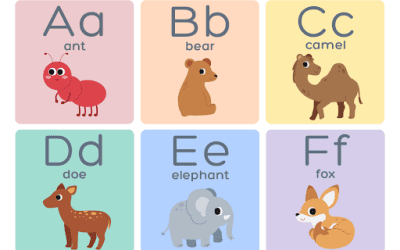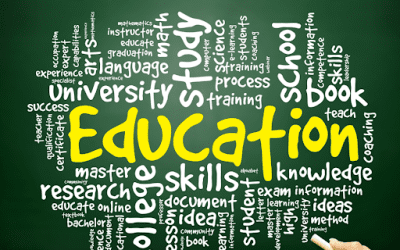By Andrew Pass with Mona Meyer
Many years ago I had a heated discussion with the vice president of a major teachers’ union. We disagreed on some issue related to teachers. At the end of the discussion she looked at me and said, “I guess the big difference between us is that I stick up for teachers.” I responded, “I know the main difference between us is that I stick up for students.” Though I felt proud of myself for making this largely rhetorical point, in reality there is a tremendous amount of substance behind what I said. Within an ideal educational setting absolutely everything that occurs should be centered around the needs of students. Of course, effective teachers do work towards this goal and should therefore be supported.
Unfortunately, many students do not see the relevance of what they do in school. When students do not recognize relevance, they most likely do not feel as if they are the center of the educational process. Instead, they might feel as if they themselves are irrelevant to what they are learning. The issue of relevance is even more important for adult learners. In fact, John Keller’s ARCS model of motivation recognizes relevance as one of the four key motivators for adult learning (Keese, 2008). The implication for career colleges is that students must see themselves as having the ability to succeed in courses that are relevant to their lives and their aspirations.
Creating Relevant Courses
Two things must occur for students to know that a course is relevant. First, the course must actually be relevant. Second, students must be aware of its relevance. Neither of these traits is easy to ensure, particularly in the 21st century, when jobs change so quickly. Yet, professional curriculum developers know how to achieve these two goals.
In order to ensure that an individual course, or entire career preparation program, is relevant, curriculum developers must have deep understanding of the specific career. They must understand the career as it exists in present time and understand the most likely ways in which this career will evolve. Obviously this is very specialized knowledge. Just because somebody knows how to design instruction does not mean that he/she will possess a deep understanding of the career. Consequently, curriculum developers should rely upon subject matter experts for this information. A subject matter expert need not know how to develop engaging curricula as long as he/she can bring his knowledge of the career to the project team.
In an effective curriculum development team, the subject matter expert will be supported by a thoughtful instructional designer. Effective instructional designers know how to take specific content information and meld it into relevant courses or educational programs. To do this, an instructional designer begins by asking what a practitioner needs to be able to do to succeed at a specific job. These essential skills become the course, or program, objectives.
Essentially, an educational program is one very large course of study. So, to design this type of a program, an instructional designer would start with all of the necessary objectives. He/she would then, most likely with the assistance of the subject matter expert, categorize the objectives into groups that are most like one another. These related groups become individual courses. Of course, once individual courses are developed, specific class sessions must be created. Instructional designers often create smaller objectives that can be fulfilled in a single session or several sessions. Once the courses and class sessions have been shaped from specific objectives, the instructional designer must develop engaging activities to enable students to master the objectives and assessments to ensure mastery.
These activities and assessments are extremely important to the success of any educational program. Many students who enroll in career colleges truly believe that they are incapable of succeeding in traditional academic environments. Perhaps they have been pushed into enrolling by a parent or another close relative. Many simply have low self-esteem in general, since the majority of their lives have been spent in school, where they might not have experienced success. It is therefore absolutely essential that students feel confident in their abilities and have an opportunity to experience success when completing these activities. Again, Keller’s ARCS model supports this assertion, naming confidence and satisfaction as two of the other components necessary to motivate adult learners (Keese, 2008).
Just because many career education students have not experienced success in school does not mean that they are stupid or incapable. Some of the time this lack of success can be attributed to a failure to engage in typical academic activities. If learning activities within career preparation schools are developed correctly, many students will experience success for the first time in their lives.
In order for students to make the most of their career preparation program, they must believe that it is relevant to their future work. More than ten years ago, I taught social studies methods to pre-service teacher education students. My students had been successful enough in school to want to be teachers and gifted enough students to be accepted into one of the top ranked teacher education programs in the United States. These students complained every time they heard about theory and were asked to reflect. They insisted that they wanted to learn what they needed to do to teach, not consider abstract issues. Like so many others, my students did not value the importance of theories.
An understanding of theories gives students objects to place in their tool kits that they can then bring to their work. Students should recognize that, typically, in any given situation, specific types of behaviors on their part will lead to specific outcomes. These outcomes alter the situations and call for new behaviors. Unfortunately, every situation is not typical. Therefore, students must also develop the abilities to ask why a specific behavior will not lead to an expected outcome. They must then be able to think on their feet to adjust their behavior to achieve the desired outcome. Put more broadly, if we merely tell students what to do, they will only know how to respond in specific situations. However, by learning theory, students will be able to contemplate how different types of work behavior might produce different student responses. By developing theoretical understandings, my students, future teachers, would become empowered to alter their behaviors based on the milieu.
Particularly in the 21st century, practitioners must have the skills to change their practices in order to meet evolving workforce needs. Consider the career(s) for which you, or your college, prepares students. Think about a 63-year-old veteran practitioner who began in this career forty years ago. How has his work evolved over the span of his work-life? It is our responsibility as teachers to prepare students for their careers, not their first jobs. Consequently, we must help students learn and value important theories that will guide their work, even if we never mention that “terrible” word.
Types of Activities
A variety of excellent lesson types exist for engaging students in learning. One excellent example is the simulation. From the first day of class, students can be asked to participate in activities that will require them to think in the way of the practitioner. As the class continues these simulations can build on top of one another, progressively becoming more complicated as students learn more and more skills.
Working with subject matter experts, instructional designers can build highly effective simulation activities. One important question they will consider is how to balance the importance of simulated thinking with the need for reflection. For example, in some cases it makes the most sense to have students complete the simulations in class and then answer questions about the simulations for homework and come in to the next class session prepared to discuss their answers. In other cases, students can engage with simulations at home and come in to class prepared to discuss their experiences. An important point is that the structure and style of lessons will vary. Instructional designers know how to use the tools and spaces available to them to create the highest quality learning experiences.
In addition to simulated experiences that students engage in themselves, it is sometimes very beneficial for students to read case studies, in which practitioners are depicted as solving real world problems. Students can be asked to explain why certain behaviors are more effective than others. They can be challenged to create narratives in which they interact with mock customers or clients.
We should consider how to develop these narratives so that students can be evaluated and pushed to improve their thinking. Traditionally, students might have developed these kinds of narratives in writing. However, career preparation students might be wary of writing and therefore be disinclined to complete the assignment. Fortunately, in 2015 nearly everybody walks around with a video camera in their pocket. There is no reason why students could not develop these scenarios using video. Of course, once students bring their completed videos to class, students working in groups might help one another evaluate their work.
In developing high quality learning activities, it is important to recognize that students want to be empowered. In fact, it’s probably fair to argue that one of the reasons many students do not succeed in the K-12 experience is because it is far from empowering. In order to empower students, instructional designers can build choice into the learning program. For example, students could be given a choice of different activities to complete in the pursuit of the same objectives. Rather than requiring students to complete written tests, they might be invited to complete an oral test. Even better, if an instructor can assess a student’s mastery of objectives by doing something practical, rather than taking a formal test, for many students this would be beneficial.
It might help for students to think about the process that they need to go through as a step of two questions. First, they should ask, “What is the problem?” Once they have identified the problem, they can ask, “What is the most effective way to resolve this problem?” If students learn to ask these two questions and develop the skills to correctly answer these questions in their career preparation program, it will serve them well. If students realize that this is what they are learning to do in their advanced education, they will recognize its relevance.
Seeing the Relevance
Just because learning material is relevant to a student’s future work does not mean that the student will necessary recognize the relevance. As previously mentioned, theoretical learning was important to my teacher education students, yet the students did not recognize this relevance. As educators it is often important to help students recognize the value in what they are learning.
I began my teaching career at a private school, in Dallas, Texas, teaching social studies to middle school students. One day when the principal was in the classroom observing my teaching, I asked my students why something that we had just discussed was important. The class and I spent the next few minutes discussing its importance. Later, the principal told me that he was very impressed that I asked that question. He explained that it is very important for students to understand why they are learning what they are learning, to understand why something is important. Skilled teachers know that one of the best ways to push students to see an idea in a different way is to ask them a question and wait for them to answer the question. Students might even be asked to answer a question in writing and then discuss it as a group. Effective instructional designers know how to build moments into the teaching when students can reflect upon why something they have just learned is important.
Contracting to Get Courses
My company, A Pass Educational Group, works with organizations to develop customized content. I have therefore had the opportunity to see how different institutions work to develop courses. Some institutions rely upon their faculty to work as subject matter experts and employ several, or more than several, instructional designers to work with these faculty members. Other institutions ask their faculty members, serving as subject matter experts, to partner with contracted instructional designers. Still others contract out for both subject matter expertise and instructional design services. Of course, there are positives and negatives for each option.
Regardless of how your institution chooses to develop courses, it is helpful to remember and remind those on the development teams that not every institution desires the same kinds of courses. Just as different students have different needs and different learning styles, distinct career colleges have their own cultures and priorities. You must therefore ensure that when you work with instructional designers and subject matter experts to design and write courses, the courses fit the culture of the institution. In order to help institutions achieve this goal, my company has a very simple slogan, “We bring your educational content visions to life.”
The course development process is not about the subject matter expert or the instructional designer. Rather it is about the institution that offers these courses. Or perhaps, more importantly, in order to keep your students coming to class and finishing their educational programs, it is about the students themselves.



